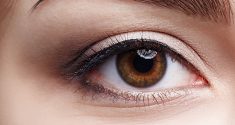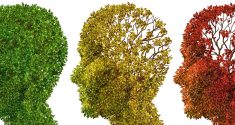For many people, winter is a time of festivities. In addition to holidays and parties, there are often outdoor sports and winter vacations to enjoy. Winter also brings its own seasonal pleasures, like snowmen, knitted socks and cozy long evenings by a fireplace. However, some people do not get the same joy out of the cold-weather months as the rest of us.
For people affected with seasonal affective disorder (SAD) winter can be a months long ordeal of fatigue and depression. What is this devastating disease? Why do some people fall prey to it while others can simply enjoy the colder season of the year?
What is Seasonal Affective Disorder?
Seasonal affective disorder is more than just the winter blues. People who have this disorder fall into a serious depression in the winter that is difficult to treat. Along with feelings of sadness and hopelessness, they suffer fatigue, fuzzy thinking, changes in eating habits and even sleep disturbances.
Scientists and doctors believe that circadian rhythm dysregulation is a critical part of developing SAD. As the days grow darker and shorter, we lose one powerful cue for our internal clocks: light. The bleak and dim light of winter is not enough to help some people keep their circadian rhythms on track. As a result, their internal clocks become increasingly dysregulated, leaving their sleep cycles, appetites, and emotions in disarray.
Why Do People Get the Winter Blues?
Living far from the equator in a place with long, dark winters is the major factor causing seasonal affective disorder. However, not all (or even most) people who live in these areas get the disorder. Although it is impossible to predict who will get seasonal affective disorder, there are a few traits that have been shown in research to increase a person’s chances.
Your geographical location is the most important variable in whether you develop this disease. If you live in an area such as Florida or the Mediterranean, where winter still has plenty of sunlight, you will still get enough natural sun to keep your circadian rhythm on track. People who live near the equators in Alaska or Siberia, on the other hand, will be at the highest risk.
Having a genetic predisposition toward depression also appears to play a role. People who have suffered from other types of mood disorder are at a far greater risk of developing SAD. Even having a relative with a mental illness can increase your chances.
Researchers have isolated one genetic mutation that appears to contribute heavily to seasonal affective disorder. People who have this mutation are less sensitive to light and thus need stronger exposures to keep their circadian rhythm on time. People who carry this mutation appear to have a far increased likelihood of developing seasonal affective disorder, with rates exceeding half in some studies.
However, none of these risk factors ensures that you will suffer from the winter blues. Even among people who have a genetic predisposition to this disease, some will never develop it. Why are these people protected while others are not? A new study poses this question and finds an interesting answer.
The Role of Serotonin Transporters in SAD
Serotonin receptors play a vital role in depression and are the target of many popular antidepressant drugs. These transporters remove serotonin, also known as the happiness hormone, from our brain. This housekeeping is important, but it can also contribute to depression. When we remove serotonin too quickly, we are left without its powerful mood boosting effects.
Researchers looked at a group of people who had the gene for seasonal affective disorder yet did not have the illness. They found that these people had very interesting serotonin receptor activity. In the winter, their bodies produced fewer serotonin receptors, thus leaving their bodies with far more of this happiness-producing biochemical than others. This made them resistant to depression.
This study may change the way we treat SAD and other seasonal circadian rhythm disorders. We currently treat these disorders mainly by trying to get the circadian rhythm back in sync. People use daily exposure to bright lights and melatonin supplements in the evening to mimic the physiological effects of warmer seasons. However, medications that affect serotonin also may have a positive effect on SAD.
Keeping a Bright Mood in a Dark Season
Even people who don’t have seasonal affective disorder may find that they are more fatigued or more down during the winter. However, there are a few lifestyle changes that can make a huge difference. These include:
- using bright lights during the day to emulate the light levels of summer
- dimming the lights and putting away screens late at night
- eating, sleeping and exercising at the same time of day
- taking melatonin supplements at night
- generally taking good care of yourself, by getting plenty of exercise and eating a healthy diet
Although winter is long and dark, it can also be a time of togetherness and joy. Keeping your circadian rhythm on its natural schedule will give you the best possible chance of enjoying the cold weather this year.









